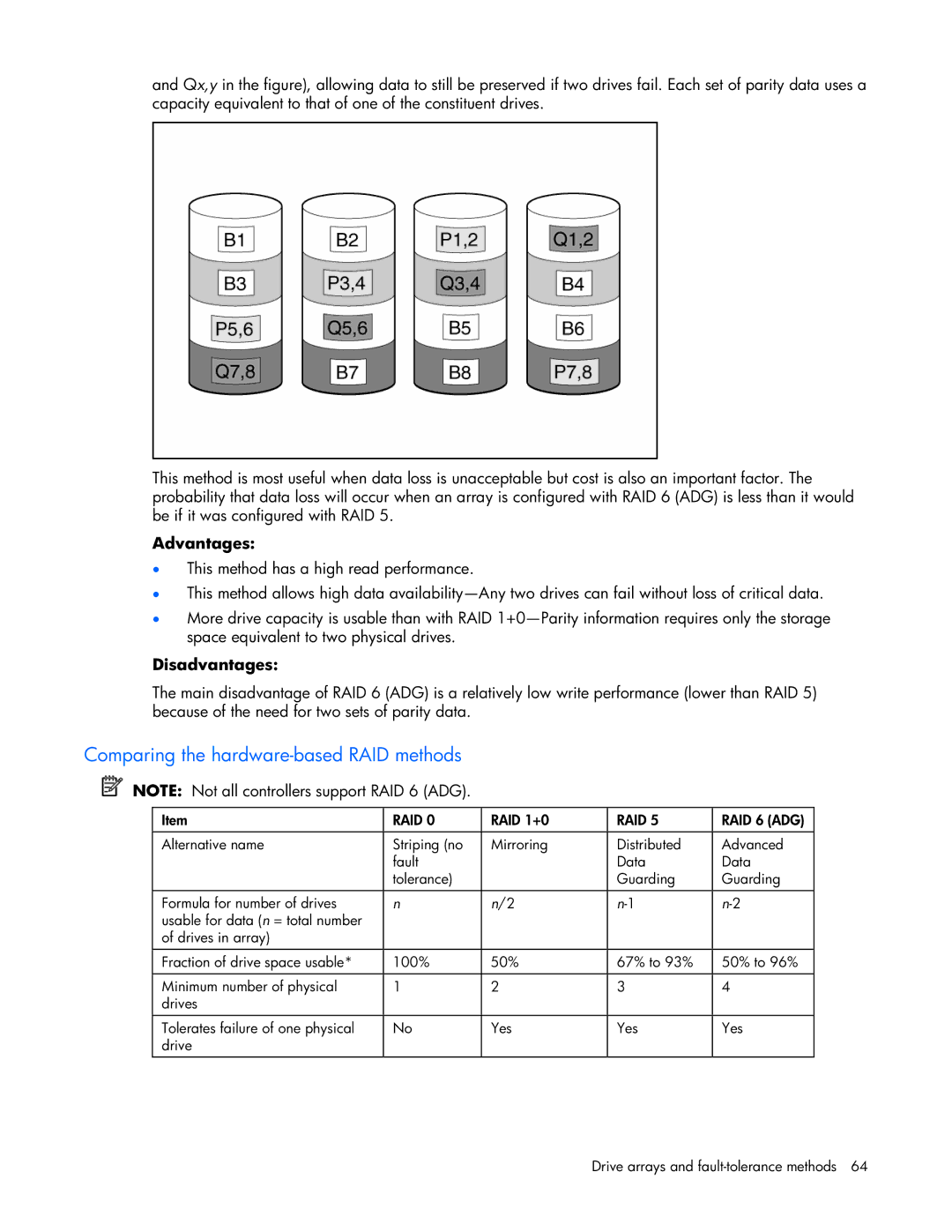
and Qx,y in the figure), allowing data to still be preserved if two drives fail. Each set of parity data uses a capacity equivalent to that of one of the constituent drives.
This method is most useful when data loss is unacceptable but cost is also an important factor. The probability that data loss will occur when an array is configured with RAID 6 (ADG) is less than it would be if it was configured with RAID 5.
Advantages:
•This method has a high read performance.
•This method allows high data
•More drive capacity is usable than with RAID
Disadvantages:
The main disadvantage of RAID 6 (ADG) is a relatively low write performance (lower than RAID 5) because of the need for two sets of parity data.
Comparing the hardware-based RAID methods
NOTE: Not all controllers support RAID 6 (ADG).
Item | RAID 0 | RAID 1+0 | RAID 5 | RAID 6 (ADG) |
|
|
|
|
|
Alternative name | Striping (no | Mirroring | Distributed | Advanced |
| fault |
| Data | Data |
| tolerance) |
| Guarding | Guarding |
|
|
|
|
|
Formula for number of drives | n | n/2 | ||
usable for data (n = total number |
|
|
|
|
of drives in array) |
|
|
|
|
Fraction of drive space usable* | 100% | 50% | 67% to 93% | 50% to 96% |
|
|
|
|
|
Minimum number of physical | 1 | 2 | 3 | 4 |
drives |
|
|
|
|
|
|
|
|
|
Tolerates failure of one physical | No | Yes | Yes | Yes |
drive |
|
|
|
|
|
|
|
|
|
